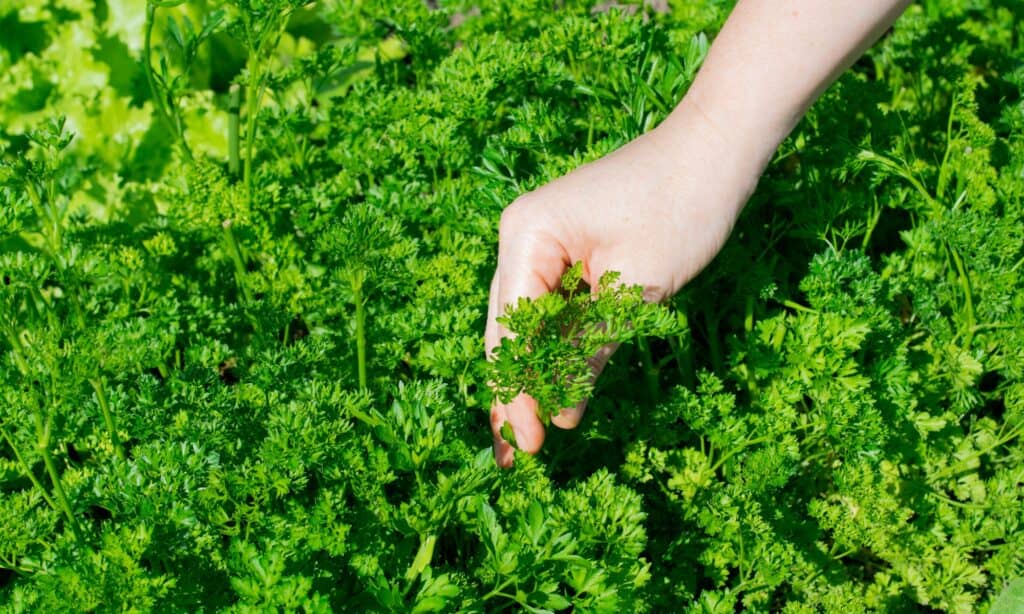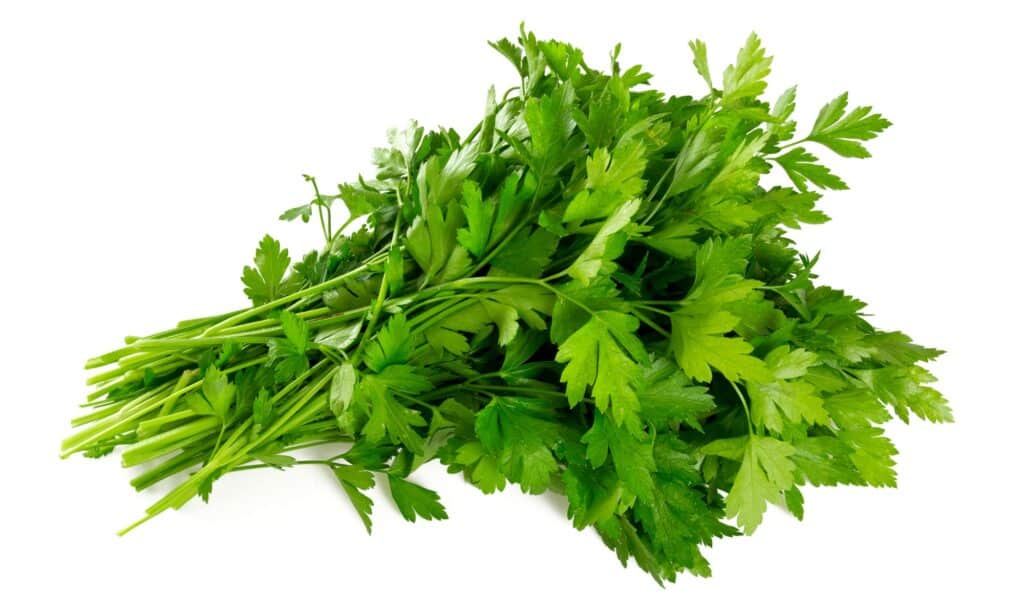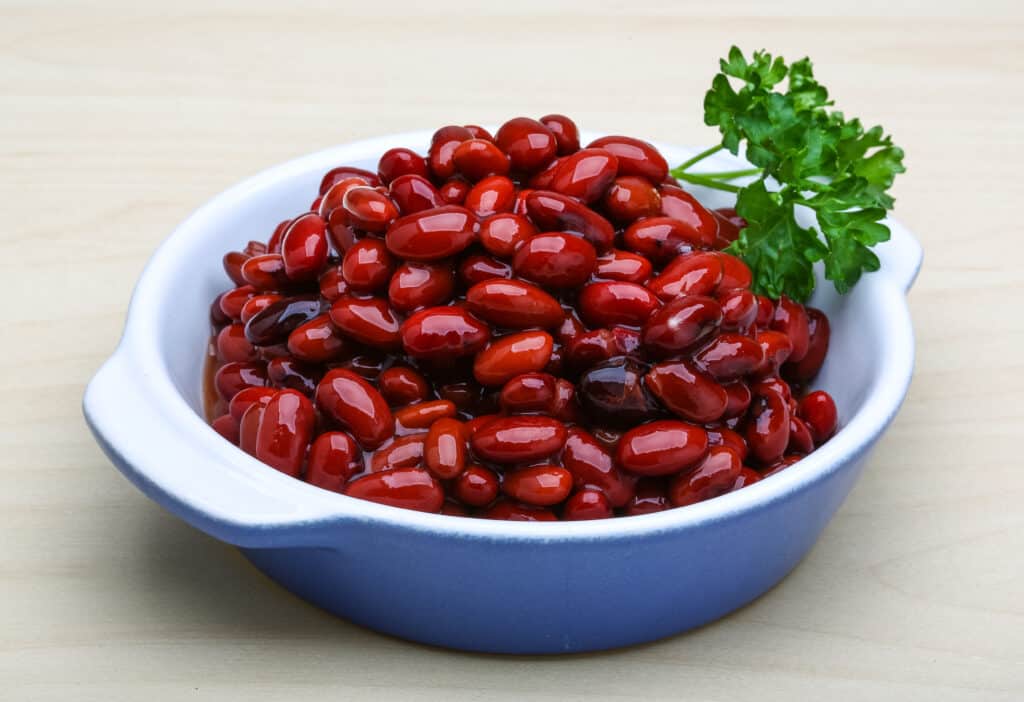Welcome to our complete guide on how to grow parsley! If you’re a fan of cooking, you know that parsley is an essential herb in many dishes. Whether you’re adding it as a garnish or using it for its fresh flavor, having access to your own supply of fresh parsley can be incredibly convenient and cost-effective. In this article, we’ll cover everything from planting and soil preparation to harvesting and storing your crop. By the end of this guide, you’ll have all the knowledge you need to successfully grow parsley at home. So let’s get started!
Parsley Overview

Parsley is a biennial herb that belongs to the family of Apiaceae. It is native to the Mediterranean region and has been cultivated for over 2,000 years. The plant can grow up to a height of 1-2 feet and has bright green leaves that are divided into two or three segments. In addition, parsley produces small white flowers in its second year.
Parsley comes in two main varieties: curly leaf and Italian flat-leaf. While both have similar flavors, Italian parsley tends to be more robust and flavorful than its curly counterpart.
This herb is widely used in cooking as a garnish or ingredient due to its fresh taste and aroma. It’s also packed with nutrients such as vitamin C, vitamin K, iron, calcium, and potassium, among others.
When it comes to growing parsley, it prefers well-drained soil with plenty of sunlight but can also tolerate partial shade. It’s essential not to let the soil dry out completely; otherwise, you risk damaging your plants significantly.
Overall, parsley is an excellent addition to any home garden because of how versatile it is when cooking while providing numerous health benefits making it worth cultivating at home regardless if you’re an experienced gardener or just starting out!
How to Plant

If you’re looking to grow parsley from seed, it’s important to be aware that the germination rate can often be quite low. To give yourself the best chance of success, one option is to soak your seeds overnight before sowing them in the soil. This can help soften the outer layer of the seed and encourage quicker sprouting.
When it comes time to sow your parsley seeds, aim for a depth of around 1/4 inch deep. It’s also important to space out your seeds appropriately – for smaller plants, 6-8 inches apart should suffice, but if you’re hoping for larger plants, then try spacing them out more like 8-10 inches apart.
While waiting for your parsley seeds to germinate (which can take anywhere from two to four weeks), keep a close eye on soil moisture levels and ensure they don’t dry out completely. One helpful tip is to plant radish seeds in any gaps between parsley seeds – these will sprout and grow faster than the parsley does, helping mark out where each row has been planted.
Finally, if you’re growing your parsley indoors, then consider using a grow light positioned at least two inches above the leaves themselves. This will help promote healthy growth in your seedlings as they get started on their journey toward becoming full-grown plants!
When to Plant

Parsley has both curly and flat-leaf varieties
©iStock.com/Oksana Chaun
If you’re looking to grow parsley, there are a couple of different options for when and how to plant your seeds. One option is to start the seeds indoors in individual pots about 6 to 8 weeks before the last spring frost date. This will give your plants a head start and allow them to get established before being transplanted outside.
However, if you choose this method, it’s important to be very careful when transplanting your seedlings, as the taproot of parsley plants is delicate and can easily be damaged during the process.
Another option is to sow your parsley seeds directly into the garden outdoors around 3 to 4 weeks before the last spring frost date. Keep in mind that parsley is a slow starter, so don’t expect immediate results from this method.
For optimal germination rates, make sure that your soil temperature is around 70ºF (21°C). However, if temperatures dip down as low as 50ºF (10ºC), don’t worry – parsley seeds are hardy enough to still germinate under these conditions.
Ultimately, whether you choose to start your parsley seeds indoors or sow them directly into the ground outdoors depends on personal preference and environmental factors like climate and weather patterns. Regardless of which method you choose, though, following these guidelines should help ensure successful growth for your parsley plants!
Plant Care

Parsley is widely used as a garnish.
©iStock.com/Diana Taliun
Parsley plants are relatively low maintenance, but proper watering is essential to ensure their healthy growth. During the hot summer months, it’s important to keep your parsley plants sufficiently watered by providing them with regular watering sessions. This will help prevent the soil from drying out and damaging the plant’s delicate roots.
To conserve moisture around your parsley plants, you can lightly mulch around them using organic materials such as straw or leaves. Mulching also helps to regulate soil temperature and suppress weed growth which in turn promotes better overall health for your parsley plants.
When planting parsley, choose a location that gets either full sun or partial shade, depending on the climate of where you live. In hotter areas, partial shade may be more suitable as too much direct sunlight can cause wilting or scorching of the leaves. On the other hand, in cooler climates, full sun exposure is recommended for optimal growth.
By following these simple guidelines for plant care when growing parsley, you’ll be able to enjoy fresh herbs all season long!
How to Harvest
Harvesting parsley is an important step in maintaining a healthy and productive plant. Once the leaf stems have reached at least three segments, it’s time to start harvesting. When cutting leaves from the plant, be sure to focus on the outer stems and leave the inner portions of the plant untouched. This will allow those sections to continue maturing and growing new leaves for future harvests.
It’s important to note that you don’t need to harvest all of your parsley at once. Instead, cut only what you need whenever you need it, allowing the remaining leaves to continue growing until they’re ready for their own harvest. This method ensures a steady supply of fresh parsley throughout the growing season.
For larger-scale harvesting, aim for major harvests every 2-3 weeks. Again, focusing on outer stems rather than inner portions will give your plant ample time to regrow between each cycle.
If you live in an area with cold winters or limited outdoor gardening space, consider replanting your parsley in a pot and keeping it indoors near a sunny window. This way, you can enjoy fresh parsley all year round without worrying about weather or space constraints.
How to Store Parsley

Parsley makes an excellent garnish flavor enhancer.
©Andrey Starostin/Shutterstock.com
When it comes to storing parsley, there are a couple of methods that you can utilize in order to keep your herbs fresh and flavorful for longer periods of time. One popular option is to place the leaf stalks in water and store them in the refrigerator. This method allows the parsley to remain hydrated while also maintaining its crisp texture. Be sure to change out the water every few days to prevent any bacteria from forming.
Another effective storage method for parsley is drying it out. To do this, begin by cutting the parsley at its base and tying a string around a small bundle of stems. Hang these bundles upside down in a warm, shady area with good ventilation until they are completely dry. This can take anywhere from several days up to two weeks, depending on environmental conditions.
Once fully dried, carefully remove all leaves from their stems and crumble them into small pieces using your hands or a mortar and pestle. Store these pieces in an air-tight container away from direct sunlight or heat sources, which could cause spoilage over time.
By following one of these methods for storing your fresh parsley, you’ll be able to enjoy the herb’s bright flavor throughout many meals without needing frequent trips back to the grocery store or farmer’s market!
How to Use
When it comes to using flat-leaf and curly-leaf parsley, there is no clear winner in terms of taste or cooking applications. Both types of parsley have a similar flavor profile, with the flat-leaf variety being slightly more robust and peppery than its curly counterpart. However, this difference is minimal, and both varieties can be used interchangeably in most recipes.
One key factor to consider when deciding which type of parsley to use is texture. Flat-leaf parsley has a smoother, more delicate texture that works well when finely chopped or minced for dishes like tabbouleh or chimichurri sauce. Curly-leaf parsley, on the other hand, has a thicker, frilly texture that adds visual interest as a garnish or when used whole in salads or soups.
Ultimately, whether you choose flat-leaf or curly-leaf parsley depends on your personal preference and the specific recipe you are making. Some chefs prefer one over the other for certain dishes based on their own experiences and tastes. The important thing is to experiment with both varieties and discover which one works best for you!
Thank you for reading! Have some feedback for us? Contact the AZ Animals editorial team.








